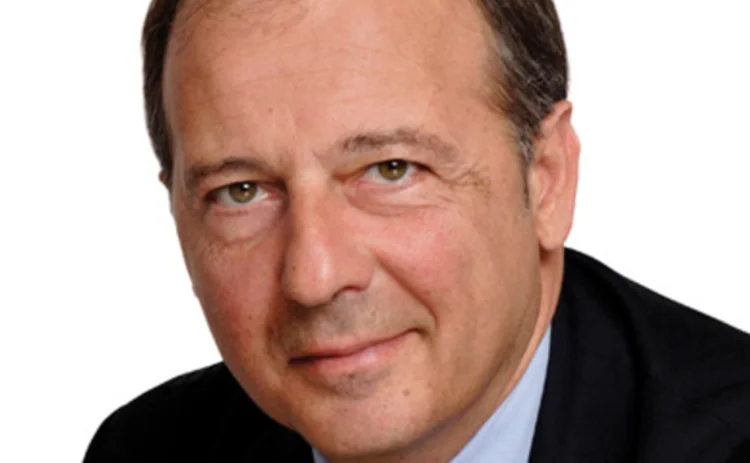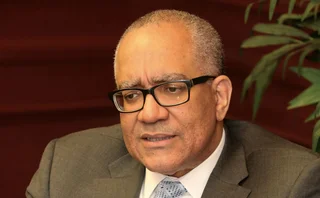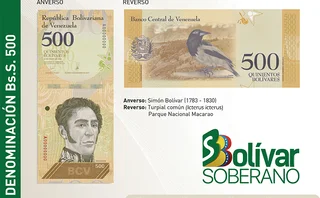
FX Invest: Overlay Asset Management sticks with emerging markets
Emerging opportunities

As far as alternative investments go, currency investment is still the new kid on the block. So new that despite trading the most liquid markets, currency programmes were among the hardest hit during the financial crisis, suffering high levels of redemptions from cash-strapped investors who were unable to unlock money trapped in traditional funds.
And now a further risk – the US Dodd-Frank Act – threatens to put the kibosh on strategies aiming to take advantage of elevated currency volatility and emerging market (EM) growth, by proposing that FX options and non-deliverable forwards (NDFs) be centrally cleared. With 80% of its €15.8 billion in client assets invested in options and emerging market strategies, that threat couldn’t be any more real for founder and chief executive at Overlay Asset Management (OAM) in London, Helie D’Hautefort.
D’Hautefort set up OAM in 1998 as an investment management company offering currency management services including overlay, managed account and pooled fund programmes. The company launched its first currency alpha programme in 2003, and by 2006 had some €10 billion in client assets under management. In December 2007, OAM extended its coverage with the launch of an emerging markets currency fund and as of April-end had €43.5 million in the strategy.
Despite the recent retracement, D’Hautefort is a big believer in emerging markets as a long-term trend. The company’s EM strategy has been its top performer, with a return of 13.6% year-to-April with an annualised volatility of 8%. “Our EM fund has beaten all other strategies this year and even after retracing a little bit recently, it has still been the best strategy we’ve had on board,” he says.
To ensure the fund is able to trade EM bull- and bear-market conditions, OAM uses a quantitative approach to establish which emerging market currencies it will be long and which G-10 currencies it will go short. “That is something we have worked on, because being just long emerging markets is almost a beta strategy and we want more of an active approach in those markets,” says D’Hautefort. “So we use a two-fold approach where we have an investment process to select the emerging market currency we will be long of, or eventually short of, and then the G-10. It’s a 100% quantitative and systematic process, with each strategy having an allocation in terms of risk budget – there’s no judgemental approach to this one.”
The strategy makes up the majority of the allocation in OAM’s multi-strategy programme alongside its options strategy – they account for an interchangeable 40% each. The remainder is split between carry, trend, valuation and high frequency. However D’Hautefort says: “We are now more exposed to options due to the risk-on, risk-off environment. We think the probability of a short-term risk-off environment is big, so we’re reducing carry and EM to the profit of the option.”
At the moment options, and indeed all strategies, are traded over the counter because of the ability to design the maturity, notional value and counterparties to a trade, says D’Hautefort. “It’s probably cheaper to trade OTC, and we also have long-term relationships with most OTC counterparts that are almost partnerships. The exchanges are different,” says D’Hautefort. “We like the way we trade.”
Across all products, OAM trades 80% electronically on single and multi-dealer platforms via FX prime brokers UBS and BNP Paribas. And perhaps owing to his grounding as a currency options trader on the sell side, D’Hautefort remains defiant about the use of OTC options even if mandated into central clearing by the Dodd-Frank Act and the European Market Infrastructure Regulation.
“Obviously we might have to look at other ways of trading after the regulations come, but we will trade OTC even if it’s collateralised,” says D’Hautefort. “We have a team of people who are dedicated to collateral and might also be used for the day where clearing is requested. As we use prime brokers, we are well advanced on that.”
But D’Hautefort cautions the increased costs will hit some harder than others, notably pension funds – a segment that makes up one third of its client base. “To penalise pension funds that want to get rid of unwanted FX risk is detrimental. There are several of us in the industry that are trying to convince the regulators that this is not a good idea for FX, we’ll see if we succeed. But FX was never a source of issue during the crisis so it’s a pity that regulators do not treat FX hedgers as an exception.”
He says, by contrast, the sales pitch for currency management couldn’t have been stronger post-crisis – not least because of the exceptionally high level of volatility to trade. Volatility has not only returned on dollar rates but also on the cross rates. At times implied volatility on euro-swiss has edged higher than the implied volatility on the dollar rates, such as dollar-euro or dollar-yen. “That’s something that’s quite new and good for the industry, from a manager’s point of view,” he says.
D’Hautefort continues that the crisis made the case for some form of currency hedging programme. “Whether it be passive or active, you cannot ignore the currency component of the portfolio. Pension funds from Australia or Switzerland that didn’t have a currency process might have lost almost 30% of the value of their assets in their home currency on currency allocation. That’s a lot, especially when the underlying assets are not performing to provide double-digit returns,” says D’Hautefort. “Not to have anything on board can be detrimental.”
Only users who have a paid subscription or are part of a corporate subscription are able to print or copy content.
To access these options, along with all other subscription benefits, please contact info@fx-markets.com or view our subscription options here: https://subscriptions.fx-markets.com
You are currently unable to print this content. Please contact info@fx-markets.com to find out more.
You are currently unable to copy this content. Please contact info@fx-markets.com to find out more.
Copyright Infopro Digital Limited. All rights reserved.
As outlined in our terms and conditions, https://www.infopro-digital.com/terms-and-conditions/subscriptions/ (point 2.4), printing is limited to a single copy.
If you would like to purchase additional rights please email info@fx-markets.com
Copyright Infopro Digital Limited. All rights reserved.
You may share this content using our article tools. As outlined in our terms and conditions, https://www.infopro-digital.com/terms-and-conditions/subscriptions/ (clause 2.4), an Authorised User may only make one copy of the materials for their own personal use. You must also comply with the restrictions in clause 2.5.
If you would like to purchase additional rights please email info@fx-markets.com
More on Emerging Markets
The EM units to watch as US and China make peace – Swissquote
Currencies such as the Thai baht, which trades heavily with China, should benefit from easing tensions
US sanctions on Venezuela could spell end of petro
Crypto asset is backed by oil reserves the country can barely commercialise
Jamaica uses social media to calm markets after FX intervention
Central bank's Wynter says FX volatility is nothing to worry about, but makes veiled warning
Lebanese pound finds support in newfound political unity
As new government forms, investors are more willing to sell dollars and buy Lebanon’s currency
Investors eye Mexico and Brazil amid hopes in regime change
They believe a projected weakening in the dollar will support emerging markets
ACI partners ICA to promote FX Global Code in Mena
Financial market association joins forces with Interarab Cambist Association
Edgewater launches Latam FX venue
LatamFX.Pro will aid price discovery in the Mexican, Chilean, Colombian and Argentine peso, the Brazilian real and Peruvian sol
Venezuela launches app for FX conversion
App allows members of the public to convert prices into the new bolivar soberano







